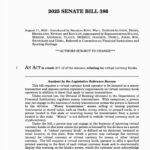Corporate Bitcoin Holdings Surge
Corporate Bitcoin holdings have skyrocketed to $215 billion across 213 entities, with public firms accounting for 71.4% of this total. However, new research cautions that this “dangerous game” is likely to see many participants struggle to endure a full credit cycle.
Research Insights
A research report from Sentora, shared with Cryptonews, indicates that companies are “borrowing billions in fiat, issuing new equity, and restructuring entire balance sheets to acquire Bitcoin,” effectively engaging in structured speculation on a highly volatile digital asset that does not provide yield.
The study highlights a crucial flaw in the strategy. “Idle Bitcoin on a corporate balance sheet is not a scalable strategy in a rising-rate world,” as many of these Bitcoin treasury companies are either unprofitable or significantly dependent on mark-to-market gains to appear solvent.
Leading Entities
Strategy leads with 628,791 BTC, followed by MARA Holdings with 50,639 BTC and Bitcoin Standard Treasury Company at 30,021 BTC. Notably, Japan’s Metaplanet reported a remarkable 468% Bitcoin yield in its Q2 2025 financial report.
In an interview with Cryptonews, Vincent Maliepaard, Vice President of Marketing at Sentora, remarked that “balance sheet diversification with a hard asset like Bitcoin is the right framing, especially in an era of heightened geopolitical uncertainty.”
Concerns About Strategy Evolution
However, the research warns that unless Bitcoin transitions from being merely digital property to productive digital capital that generates yield, the strategy remains inherently limited.
The Bitcoin treasury approach resembles historical wealth-building practices involving leveraged acquisition of scarce assets such as land and property, sharing features of “a scarce and durable asset, cheap capital,” but currently lacking “the asset’s ability to produce yield.”
Historical Context
The study notes that while families and companies have built generational wealth through real estate over centuries, “Gold Treasury companies” never emerged, despite gold’s scarcity, because of storage costs, movement difficulties, and negative carry.
Bitcoin’s advantages in digital transactions enable global transfers almost instantly, offer programmable custody, and allow for continuous trading, potentially making it superior to gold for treasury applications.
Nonetheless, the research emphasizes that “like land that gains economic meaning when developed, Bitcoin ‘must do something’” beyond merely existing as idle digital property on balance sheets.
Critical Misunderstandings
The study cautions that most Bitcoin treasury adopters from 2020-2024 have “misunderstood the asset, the structure, or the macro environment” in a period characterized by cheap fiat and QE-enhanced equities.
The shift to higher interest rates reveals structural vulnerabilities in strategies crafted for ultra-low rate environments.
Negative Carry Trades
The research categorizes Bitcoin treasury strategies as “negative-carry trades,” where companies borrow fiat to buy a non-yielding asset—a stark contrast to traditional carry trades that yield a positive result while waiting.
Unlike foreign exchange carry trades that incorporate built-in cushions, Bitcoin strategies offer “no yield cushion, no neutral carry, and no risk-parity ballast.”
Strategy’s Financial Models
Strategy has innovated the model using $3.7 billion in ultra-low coupon convertible bonds and $5.5 billion in perpetual preferred shares to support acquisitions.
Michael Saylor credits Strategy’s premium to net asset value to “Credit Amplification, Options Advantage, Passive Flows, and Superior Institutional Access,” which provide 2x-4x Bitcoin exposure amplification not accessible to spot ETFs.
Structural Vulnerabilities in Mining
The financing mechanisms showcase hidden vulnerabilities; mining companies like Marathon Digital face “razor-thin and deteriorating margins, often being structurally unprofitable below ~$100k BTC,” with Bitcoin comprising 50-80% of their assets.
According to the research, these firms are at risk of high liquidation due to short-term cash needs during downturns.
Metaplanet’s Strategy
Similarly, Metaplanet exemplifies this aggressive accumulation strategy, doubling its Bitcoin holdings every 60 days for 475 days while using zero-interest convertible bonds amounting to ¥270.36 billion.
The company has filed shelf registrations for ¥555 billion in perpetual preferred shares, aiming for 210,000 BTC by 2027, which would represent 1% of the total Bitcoin supply.
Potential Risks and Dependencies
The research highlights the structural risks associated with scenarios where “interest payments become unserviceable, refinancing costs spike, equity issuance turns non-accretive, and boards begin to question the Bitcoin strategy itself.”
Many firms lack sustainable business models aside from Bitcoin appreciation, creating perilous dependencies on continuous price momentum.
Market Dynamics
Rising interest rates amplify negative carry, and stagnation in Bitcoin prices over 2-3 years could weaken confidence and make equity issuance dilutive.
The study stipulates “there is no lender of last resort, no circuit breaker, and no refinancing facility” when Bitcoin carry trades fail, resulting in risks that are “binary and reflexive.”
Legal Challenges
Presumably due to declining risk appetite, Strategy is facing several class-action lawsuits alleging misleading statements regarding the profitability and risks of its Bitcoin strategy.
Nevertheless, the company retains unique advantages through index inclusion, garnering passive flows from $35 trillion in equity markets and $60 trillion in credit markets, compared to Bitcoin ETFs’ $700 billion access.
Emerging Trends
Recently, Kazakhstan launched Central Asia’s first spot Bitcoin ETF, while Norway’s sovereign wealth fund increased its indirect Bitcoin exposure by 192% through equity stakes in Coinbase, Metaplanet, and Strategy.
These developments align with Maliepaard’s forecast that “more private enterprises will reveal significant BTC positions” as market infrastructure evolves.
Long-Term Outlook
The research concludes that in order for the strategy to succeed in the long term, “Bitcoin must evolve from digital property to digital capital,” where it generates yield without custodianship requirements.
Until Bitcoin becomes productive through mechanisms that yield returns, most corporate treasury experiments could face significant failures during challenging credit cycles.
However, Maliepaard remains hopeful about the long-term potential, predicting that “the familiar boom-and-bust framing of Bitcoin cycles will start to fade” as adoption increases across both corporate and sovereign balance sheets.
He believes that “if debt-financed acquisition of hard assets like land and real estate has historically compounded value, applying the same playbook to Bitcoin could reshape market dynamics entirely,” with even aggressive price expectations potentially turning out to be conservative.



















